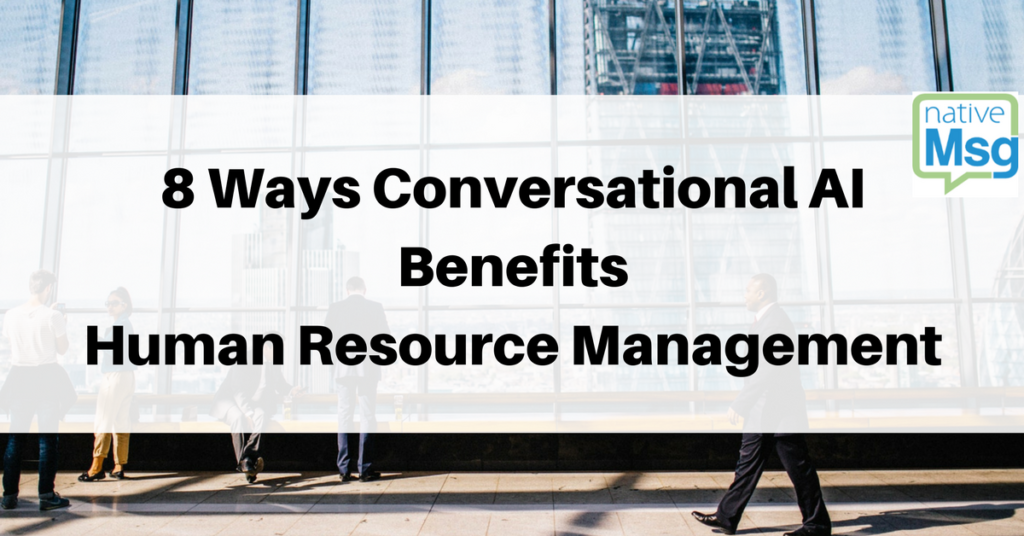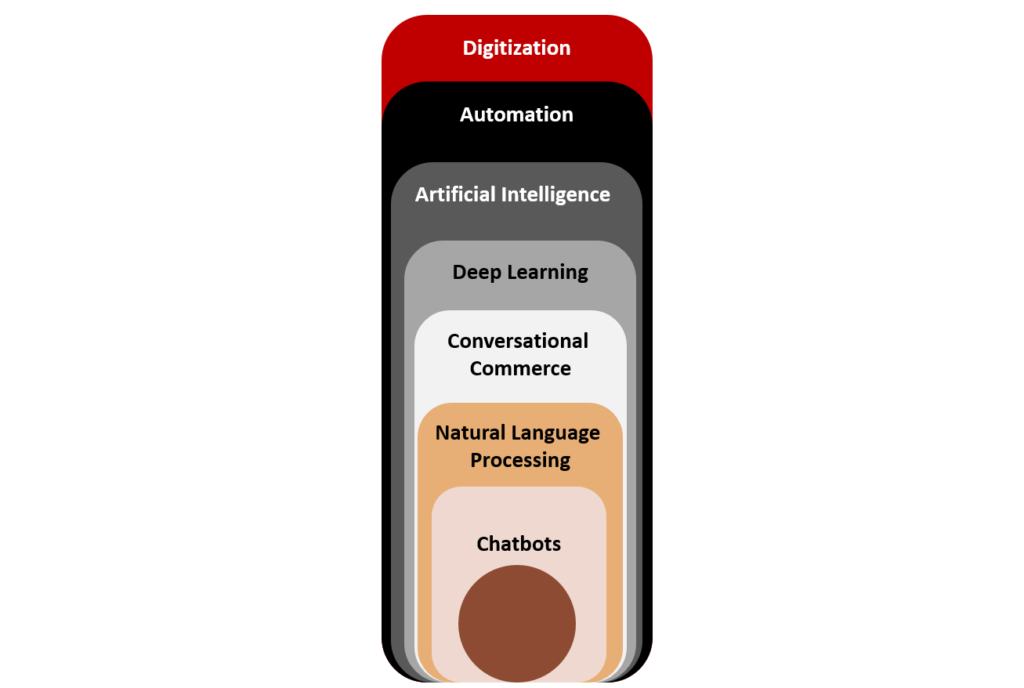
What if your human resource management team had a tool to converge every part of their work process? The reality is, conversational AI, or chatbots, can do much more than automate paper-driven tasks. In fact, it’s one of the fastest growing and easiest means to not only streamlining all your processes but in helping you meet your HR goals.
The Most Common Human Resource Management Challenges
Data shows that companies spend the most on human resources. According to LinkedIn Talent Solutions, 59 percent of companies are actively investing in their employer brand. But there are a common set of continued challenges that companies want to solve:
- Siloed systems
- Functional onboarding
- Better recruiting practices
- Increased employee engagement
- Gathering and assessing analytics
- Retention
- Seamless scaling in early stages.
Across the board, businesses continue to research the most effective ways to approach these processes.
Conversational AI doesn’t only provide task automation, it also includes conversational sites and site components. It offers a simple interface that requires a low learning curve for anyone on your team. Under the hood, it provides customizable processes and data gathering that can be controlled from one point.
Here’s how conversational AI can solve the challenges human resource management faces today:

1. Easily Converge Siloed Systems
One of the most problematic areas in human resources, as well as in any organization, is how systems work together for cohesion. Per one report, most businesses use, on average 14 systems.
Software solutions, third-party or contracted HR groups and roles are one solution to help your team track onboarding, new-hire orientation, payroll, taxes, employee benefits and expense tracking.
But conversational AI can play a supportive role in connecting these facets so that this information is easy to access, all in one space, by a simple request.
Here’s how it can work:
2. Functional and Engaging Onboarding
Onboarding new employees is a constant focus area for growth. It has grown to include not only necessary paperwork and compliance tasks, but it’s also become part of the crucial first impression for a new employee. A frustrating onboarding experience can thwart retention rates and engagement.
Organizations can add a conversational component to existing software, a HIPAA-compliant conversational HR component on-site, or create a wholly conversational employee site.
A conversational user interface can easily walk a new hire through every facet of onboarding, from electronic signatures for paperwork to providing a virtual office tour prior to an employee’s first day.
Moreover, while other software can can offer similar components, a conversational user interface does so more easily. It offers an intelligent virtual assistant in a conversational context that can guide, answer questions and offer support with privacy.
The possibilities are broad. Imagine uploading short welcome videos from current employees as part of the onboarding process. This innovative ice breaker is just one way you can use rich media messaging to engage and build employee trust, even prior to the new hire’s start date.
3. Ease Compliance Tasks
It takes a dedicated and informed human resource management to stay on top of employee compliance. But a supportive conversational component to manage this process can offset their workload.
Human resource management must address new codes and ensure your organizations runs safely and legally, from the start. How your organization communicates this and enforces it, effectively is equally important.
Conversational AI can be trained to send alerts for anything from new state regulations to approaching deadlines to your busy HR team. It can also be trained to alert employees of any outstanding items or new information that can directly affect them. It can personalize this information based on information captured in onboarding.
Has your state rolled-out a new family leave option? Software that includes a conversational component can alert employees that may most benefit from this. It can simplify the process by answering basic questions, scheduling meetings for additional information or walking an employee through application or paperwork entries.
Subscribe to our Newsletter
4. Decrease Payroll and Benefits Challenges
Tracking payroll and payroll taxes is typically an inter-departmental task, but one that is commonly couched within HR. Intelligent chatbots can automate common data entry tasks to offset a busy HR team’s workload. And it can easily pull-up information via a simple written request. Much like compliance applications, the tool can manage data entry and alert employees of accrual benefits.
5. Innovate the Recruiting Process
Fall-off during the application process is a common problem. Many innovative organizations have begun to use conversational tools to streamline their recruiting process. Chatbots can curb the tedious and time-consuming nature in both sides of the application process. They can easily review applicant information and answer basic applicant questions.
A chatbot can guide the pre-screening process to the next phase, by answering follow-up questions or scheduling an interview.
Most importantly, chatbots are a way to extend your brand and company culture right from the beginning, in the recruiting process. For candidates, responsiveness is a welcome facet. Whether your organization offers a first interview or rejects an applicant, a chatbot can quickly provide this information and feedback. It’s a simple way to solve applicant frustration with the wait period, or worse, not hearing back at all.
6. Enhance and Increase Employee Engagement
These days, employee engagement is a key focus and driver for how an organization orients its processes and systems. Conversational AI can gather insights via employee interactions whether it’s on CRM or collaboration software or even within email, to glean information about employee satisfaction, productivity and engagement motivation.

Predictive analysis, built into smart chatbots, can help determine everything from retention rates, to dissatisfaction and areas for improvement in engagement.
Conversational applications, from requesting employee feedback to initiating the review process, is a helpful container for moderating what can be challenging interactions. Employees may find it easier to answer questions remotely as well as enjoy the privacy and space the tool offers in accepting preliminary feedback.
7. Gather Customizable Analytics
Similar to functionality in engagement processes, intelligent chatbots can gather meaningful data and provide it in a customized way.
What’s more, machine learning creates more insights over time. This is a different application from systems with integrated pulse points. Conversational AI can actually customize these pulse points, over time, based on real-time analytics and interactions.
Data can show everything from your organization’s successful sales process insights, measure employee stress points in given interactions and offer feedback on productivity busters.
8. Smooth the Scale-up Process
Scale-up tech and start-ups can all experience some turbulence during the growth phase, while a small team wears many hats. Whether your organization wants a similar automation solution or a full-service support system, intelligent conversational solutions can offset administrative tasks that bog down executives and founders, where according to one report, a quarter of their time is spent on these tasks.
Chatbots for human resource management can do this with cloud-based, secure, in-house functionality that can update and grow with your organization.
While many start-ups opt to contract with a third-party solution, an integrated conversational solution is valuable over time as it learns and grows with your company’s needs, without the added resource and expense needed to do so that can come with an outside and offsite organization.
Whether you begin with an integrated Slack Bot, integrate a conversational component on site, or build out an entire conversational site with AI, each of these options can help your organization run more effectively.
Free Trial
Get Started With RCS
Business Messaging!
Unlock the power of RCS and revolutionize your customer engagement.



